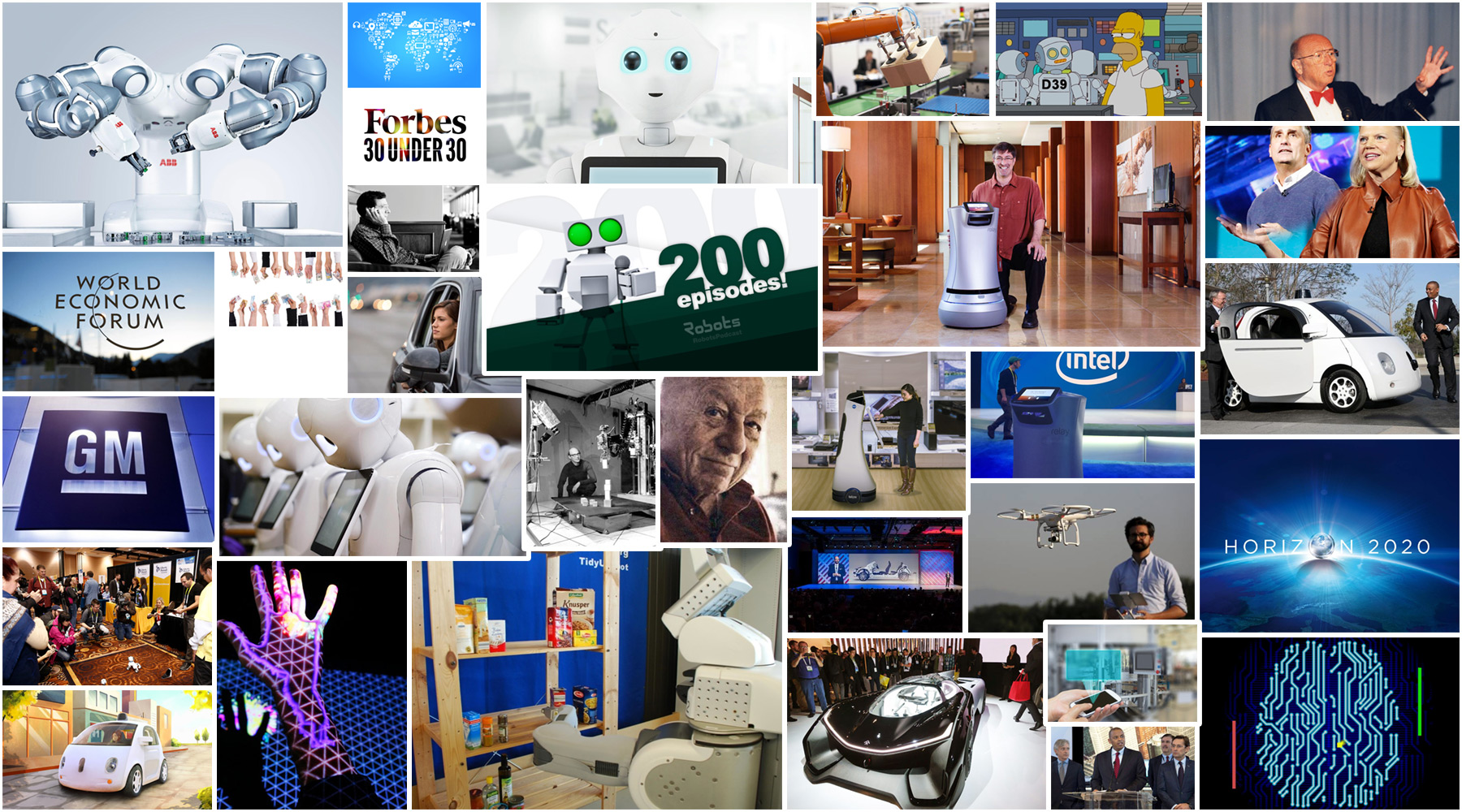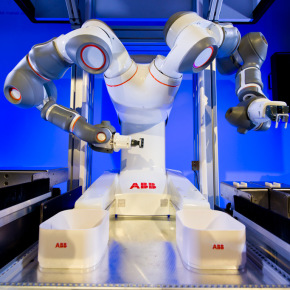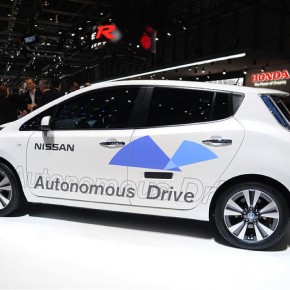
Robohub.org
Robohub Digest 01/16: €100 million for European robotics, CES and WEF 2016, passing of AI pioneer Marvin Minsky

A quick, hassle-free way to stay on top of robotics news, our robotics digest is released on the first Monday of every month. Sign up to get it in your inbox.
Off to a flying start
It’s the beginning of the New Year, what will happen in the robotics world in 2016? Whilst no one really knows for sure, popular discussions and trends in robotics over the past months feature exciting developments. For example, substantial growth in robotic startups, progress in connected autonomous cars and drones, more prominent roles for social robots, and a boost in industrial and agricultural robot use. The latter in particular is predicted to see big changes in supply chains and the world’s first farm run entirely by robots, which by 2017 aims to harvest 30,000 heads of lettuce daily.

YuMi robot | photo ABB
Collaborative robots (co-bots) working jointly with humans are rapidly advancing, thanks to affordable sensors and computer power. It’s no wonder this sector is expected to grow and reach over $1 billion in 2020 with collaborative lightweight robots becoming the top seller in the industry in about 2 years.
Another trend we haven’t discussed — but it tends to come up again and again — is the Internet of Things. Whilst this area isn’t actually ‘new’ it is worth watching as we’re shifting away from building devices to designing services.
Forbes also expanded their ’30 under 30’ list, highlighting more trends in advanced manufacturing, conversational systems and human-augmented AI.
The Fourth Industrial Revolution
 This year’s World Economic Forum in Davos discussed the ‘Fourth Industrial Revolution’, the technological revolution that will alter the way we live, work, and relate to one another. To stimulate further discussion along these lines, topics focused on powerful new technologies and concepts — from artificial intelligence to advanced analytics — along with philosophical questions about human values and human traits.
This year’s World Economic Forum in Davos discussed the ‘Fourth Industrial Revolution’, the technological revolution that will alter the way we live, work, and relate to one another. To stimulate further discussion along these lines, topics focused on powerful new technologies and concepts — from artificial intelligence to advanced analytics — along with philosophical questions about human values and human traits.
With eminent speakers, including Alan Winfield and Vanessa Evers, attendees tackled a range of topics from the future of jobs in times of increasing automation, to the impact of robotics on the car industry, and the fear of robots rising up against us.
How friendly is your AI?
Artificial intelligence was another hot topic at the WEF with discussions on the current state of AI and debates around emotional intelligence. January saw several interesting articles about this area. On Robohub we asked ‘how friendly is your AI?’ and whether AI and humans can learn to collaborate, or are destined to compete. Researchers believe it is imperative to carefully define rewards in order to avoid costly surprises. In addition, we published an interview with New York Times reporter John Markoff about his career and views on the quickly evolving AI sector.
Big investments in robotics
 Whilst the start of the New Year is a time to look forward it is also a time to reflect. 2015 was a year of great successes for robotics, including record investments in drone technology. Frank Tobe looked back at robotics funding, IPOs, acquisitions and failures in 2015 to see what we can learn from the past and how it might help us predict what will happen in the future.
Whilst the start of the New Year is a time to look forward it is also a time to reflect. 2015 was a year of great successes for robotics, including record investments in drone technology. Frank Tobe looked back at robotics funding, IPOs, acquisitions and failures in 2015 to see what we can learn from the past and how it might help us predict what will happen in the future.
2016 looks set to continue with the upward trend, as Horizon 2020 earmarked almost €100 million for European robotics, and Savioke, developer of service robot ‘Relay’, secured $17.6 million in funding from Intel Capital, EDBI, Northern Light Venture Capital. Autonomous and connected cars continue seeing investments, with the White House putting forward a $4 billion proposal to speed up the deployment of robocars, and GM combining forces with Lyft to bring forward the day when your taxi is a driverless car.
Consumer electronics
 Autonomous vehicles were all the rage at this year’s CES in Las Vegas. But the time robocars – and only robocars – roam our streets won’t be for quite a while as there are still a number of issues that need to be resolved, according to Google’s intervention rate reports.
Autonomous vehicles were all the rage at this year’s CES in Las Vegas. But the time robocars – and only robocars – roam our streets won’t be for quite a while as there are still a number of issues that need to be resolved, according to Google’s intervention rate reports.
CES is not just robocars, there were plenty of other exciting talks and news from the event, like the CEOs of IBM and Intel describing the ways in which purchasing has been transformed by technology, Aldebaran’s chief of innovation outlining the rise of the social robot, and Toyota’s announcement of their all-star leadership team for AI and robotics research. But not all the cool stuff shown and discussed at CES is ready for the market, as Farhad Manjoo argued in the New York Times, describing the ‘awkward adolescence’ of consumer tech. If you’d like to learn more, there’s a brief CES round-up available online, where you can also watch a replay of the keynote speech given by Brian Krzanich, CEO of Intel Corporation.
Service robots are growing up
 It’s no secret that service and social robots are gaining in popularity (as the success of Pepper’s presentation at CES showed once again) and becoming more affordable. On 27 December another batch of Pepper robots sold out in just one minute and researchers are working on various improvements. In Germany, roboticists are training robots to predict your organisation preferences. And in the US, Savioke is trialling its service robot in real-world settings to find out whether and how it impacts on service. Several companies are working to implement and improve telepresence, by improving natural language recognition. It’s exciting for service robotics, certainly an area to watch.
It’s no secret that service and social robots are gaining in popularity (as the success of Pepper’s presentation at CES showed once again) and becoming more affordable. On 27 December another batch of Pepper robots sold out in just one minute and researchers are working on various improvements. In Germany, roboticists are training robots to predict your organisation preferences. And in the US, Savioke is trialling its service robot in real-world settings to find out whether and how it impacts on service. Several companies are working to implement and improve telepresence, by improving natural language recognition. It’s exciting for service robotics, certainly an area to watch.
Robot’s podcast: 200th episode special
We couldn’t end this digest without a nod to the Robots Podcast, which celebrated its 200th episode on 22 January with a look back at nearly 8 years of podcasting. Run entirely by volunteers, the podcast has featured many of the great names in robotics, including Rodney Brooks (who also appears in the celebratory 200th episode) and Alan Winfield.
In memoriam

Marvin Minsky visiting the OLPC office. Photo credit: Sethwoodworth, Wikimedia Commons
There was also sad news at the start of the New Year with AI pioneer Marvin Minsky passing away at the age of 88. This comes after the father of robotics, Joseph F Engelberger, recently passed at 90, just one month prior. Minsky was the first to explore the use of common-sense reasoning in computer programming and paved the way for the fields we now know as AI and machine learning.
Coming up in February
- Unmanned Systems Expo 2016, The Hague, Netherlands, 2 February
- Quark 2016, K.K. Birla Goa Campus (India), 5 February
- WearRAcon 16, Phoenix, AZ, 10-12 February
- AAAI-16, Phoenix, AZ, 12-17 February
tags: Robohub Digest






